|
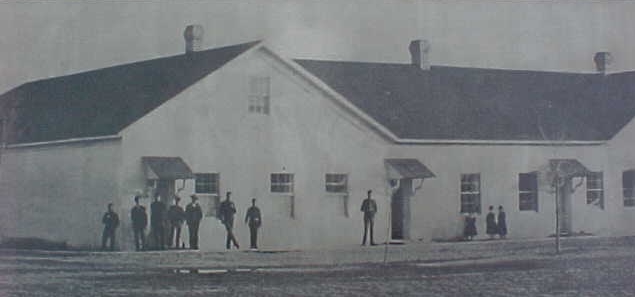
Administration Building, 1880's
The Administration Building was constructed in 1885 of a lime grout. The building
in addition to housing the post adjutant's office, contained a library, school, and an
auditorium. As depicted in the next photo, the building is now in ruins.
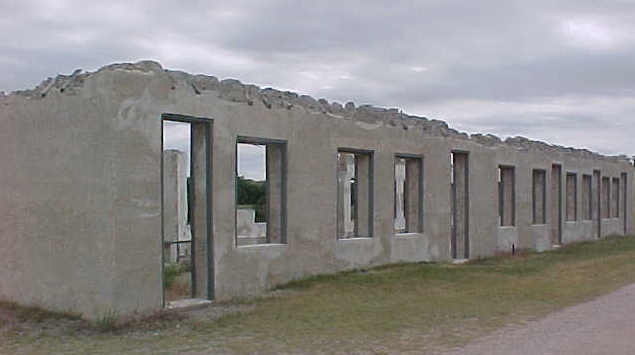
Administration Building, 2001, photo by Geoff Dobson
Other buildings which are now in ruins include the officers'
quarters depicted in the next photographs

Officers' Quarters, 1880's
The above buildings were also constructed of lime grout. The three buildings consisted of
two duplexes plus the commanding officer's quarters. Only the commanding officer's quarters
had inside plumbing.
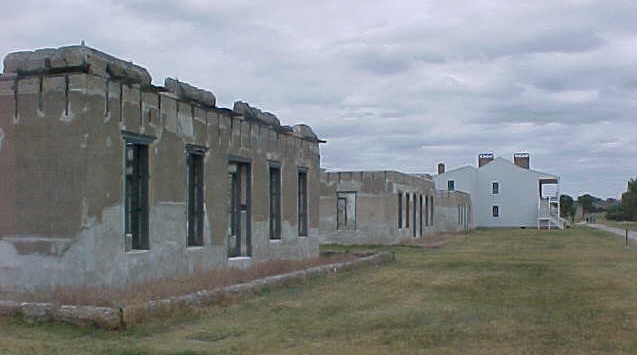
Officers' Quarters, 2001, photo by Geoff Dobson
Beyond the Officers' Quarters is "Old Bedlam."
The concrete houses were constructed in 1881 as additions to older, smaller structures.

Infantry Barracks, undated
At the left is the Infantry Barracks, constructed in 1867, located at the
northeast side of the Parade Grounds. The frame building housed three companies. In the center
of the photo is the "New" Guardhouse built in 1876 in response to complaints by the
post surgeon as to conditions in the old guardhouse. At the right hand side of the
photo is another infantry barracks constructed in 1866. Only foundations are left of the
two barracks buildings.
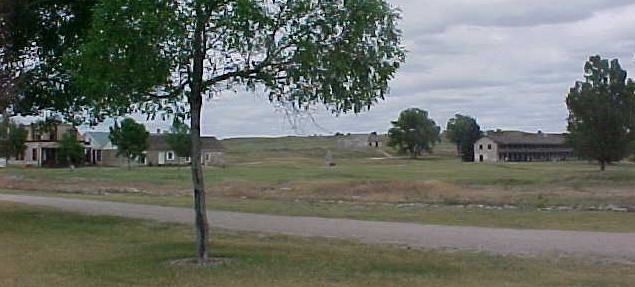
Infantry Barracks, 2001, photo by Geoff Dobson
In the foreground on the opposite side of the road, are the
foundations of the Infantry Barracks depicted at the left in the upper photo. In the distance on
the right is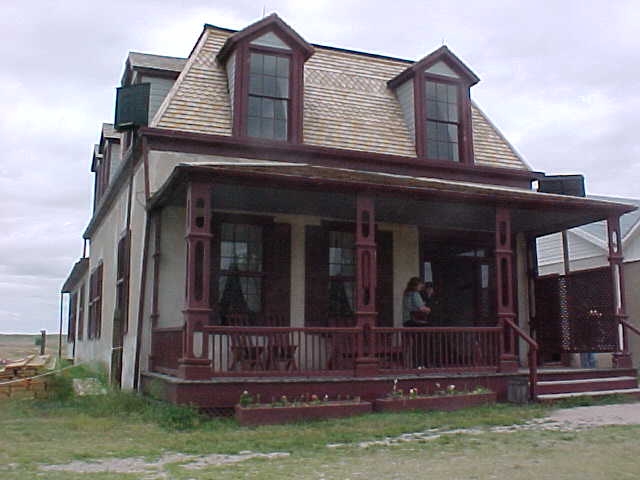 the Cavalry Barracks constructed in 1874. In the center of the photo on the hill are the
ruins of the post hospital, close-up on preceding page. At the left is the Sutler's Store, also
depicted on the preceding page.
To the left of the Sutler's Store is the Lt. Colonel's Quarters, now referred
to as the "Burt House" constructed in 1884 and named after Lt. Col. Andrew Burt, stationed at
Ft. Laramie twice. Burt also served as commander of Ft. C. F. Smith constructed to
protect the Bozeman Trail and also participated in the Battle of the Rosebud. The Burt House is noted for having housed the largest colony of bats at the fort. At one
time as many as 3,000 bats made their home in the house. Unfortunately, bat urine is highly acidic and
caused extensive damage to the house. The Park Service has now "bat proofed" and restored the structure. the Cavalry Barracks constructed in 1874. In the center of the photo on the hill are the
ruins of the post hospital, close-up on preceding page. At the left is the Sutler's Store, also
depicted on the preceding page.
To the left of the Sutler's Store is the Lt. Colonel's Quarters, now referred
to as the "Burt House" constructed in 1884 and named after Lt. Col. Andrew Burt, stationed at
Ft. Laramie twice. Burt also served as commander of Ft. C. F. Smith constructed to
protect the Bozeman Trail and also participated in the Battle of the Rosebud. The Burt House is noted for having housed the largest colony of bats at the fort. At one
time as many as 3,000 bats made their home in the house. Unfortunately, bat urine is highly acidic and
caused extensive damage to the house. The Park Service has now "bat proofed" and restored the structure.
Upper Left, "Burt House," photo by Geoff Dobson.
|